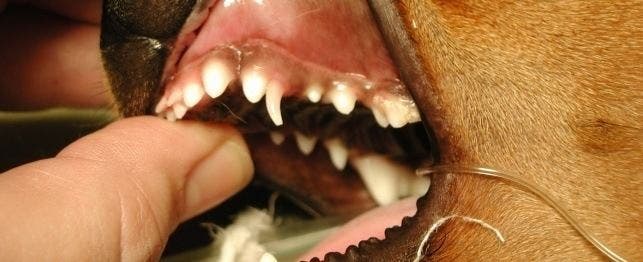
Dealing with Retained “Baby -Teeth” in Dogs
As with people, puppies lose their baby teeth, or deciduous teeth, and develop adult teeth. By 1 month of age, puppies generally start “erupting” their baby teeth – that’s when the teeth begin to break through the gums – and have all 28 deciduous teeth by the time they reach 1 ½ months of age. By the time a puppy is 6 to 7 months of age, generally all the baby teeth have been replaced with 42 adult or permanent teeth.
The body begins a process of resorption of the baby teeth as soon as the permanent teeth begin their formation. This process causes the teeth to loosen and fall out as the permanent teeth erupt. Occasionally, the normal resorption process fails, and the deciduous teeth do not fall out. This is commonly referred to as “retained deciduous teeth.” This situation leads to problems as two teeth try to occupy the same area causing the new permanent tooth to erupt at an abnormal angle or in an abnormal position. This can result in malocclusion or an abnormal “bite.”
The four “canine” teeth are most commonly retained. These two sets of canine teeth – one mandibular set on the lower jaw and one maxillary set on the upper jaw – are the sharp fang-like teeth that are just behind the front 6 central incisors.
Extraction (or removal) of the retained deciduous teeth is recommended as soon as the problem is identified, since early removal allows the adult teeth to move into their normal positions preventing malocclusion problems. Special veterinary care is required during extraction of the baby teeth to prevent damage to the permanent tooth. Often, retained deciduous teeth are removed at the time of spay or neuter since anesthesia is recommended for both procedures.
Late diagnosis or late removal of retained deciduous teeth may result in severe malocclusion associated with pain or difficulty eating. These cases may require surgical removal and orthodontic dental work to reposition the teeth and improve the “bite,” usually with the use of braces.